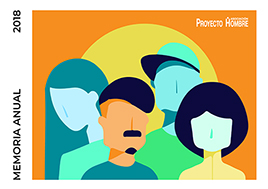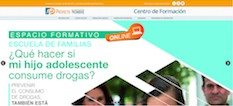24 septiembre, 2019
The Roma Population and its Incorporation in the Labour Market: the Work of the Secretariat Gitano Foundation
Arantza Fernández
Director of the Department of Employment of Secretariat Gitano
The situation of the Spanish Roma community, made up of an estimated 700 thousand people, has considerably changed over the last 40 years, comparatively more than in the five centuries they have living in Spain.
For the Spanish Roma population, the arrival of democracy and the adoption of the Spanish Constitution see them for the first time in their history, being formally subject to law and official citizens, equal to the rest. Clearly, their situation in the social hierarchy remained the lowest and with enormous objective and symbolic social difference[1].
Nevertheless, the 80s and 90s signified years of unprecedented advancement, especially taking into account the starting point, as well as other factors. As we have already pointed out at other times[2], the implementation of our late and precarious Welfare State transformed the Spanish society and with it, the Roma community. Access to universal healthcare, the education system, non-contributory pensions, social housing schemes and social security benefits as well as other protection mechanisms signified a transformation without precedent of the living conditions of the Roma people.
In fact, the improvement and change are very intense when compared with the starting points in which Roma families found themselves at this time and are equally relevant when we compare them with the situation of the Roma communities in other European countries. However, the progress is not so positive when we compare it with indicators of integration and welfare of the Spanish society as a whole.
It is also important to highlight that although generally speaking, the members of the Roma community share a series of common characteristics that allow for their mutual recognition, it must be shown that this community is also characterised by its heterogeneity and diversity.
A significant number of Roma men and women still undergo serious difficulties in finding a job and in accessing professional training, a problem which brings about one of the main causes of inequality and social exclusion
It is by no means less obvious; however, that the Roma community continues to suffer from the highest levels of rejection in present-day Spanish society and that it is one of the most excluded groups in social and economic terms. A significant number of Roma men and women still undergo serious difficulties in finding a job and in accessing professional training, a problem which brings about one of the main causes of inequality and social exclusion. The decline in their traditional professions and activities (street vending, collection of paper and scraps, etc.), along with their lack of skills has contributed to them being expelled from the labour market. The prejudice and stereotypes which have brought about the stigmatisation of the Roma people by the majority of society has also contributed to this situation.
The degree of inclusion or exclusion of a person in society and the risk that he/she runs in falling into a situation of vulnerability and of poverty is strongly linked to five key elements: employment, social protection, housing, education and health.
At the Secretariat Gitano Foundation, we have positioned employment and incorporation in the labour market as one of the keys towards social inclusion: understanding it as a two-way process, with profound, active involvement from all men and women, which is only possible if there are real options of social mobility, of promotion, not only meaning to guarantee rights and prevent discrimination, but above all working to compensate the disadvantages by way of positive actions and specific programmes.
From this approach, the Secretariat Gitano Foundation, 20 years ago, set in motion a pilot experience, in the Madrid neighbourhood of Pan Bendito where an intervention model was developed for paid employment with a Roma population: the Acceder programme, from the European Social Fund. This pilot experience, new not only in Spain, but also in the rest of Europe, laid the foundations of the programme which today is carried out in 14 autonomous communities, with 59 intervention teams which in December 2018 had already been approached by more than 104,692 people, 70% Roma men and women. The programme had managed to get more than 30 thousand people to improve their skills and competences for employment, obtaining more than 81 thousand contracts and collaborating for this with more than 26,400 companies distributed all over Spain.
Acceder emerged as an intervention model for the labour inclusion of those men and women who find themselves more removed from the labour market. The programme learned from and listened to initiatives for employment being developed throughout Europe, adapting when necessary the contexts of vulnerability and of the Spanish Roma population. It is a comprehensive intervention model which is based, on the one hand, on the development of integrated plans of socio-labour insertion and, on the other hand, on comprehensive actions and complementary measures to improve the social image, fight against discrimination and promote more active social inclusion policies of the Roma community. These are held up by three main pillars:
- A personalised intervention, from the carrying out of the educational and competence plan, along with an analysis of different variables, the occupational and educational diagnosis, the unique and exclusive design of the personal insertion plan of each participant.
- An intervention in the immediate environment from a socio-familiar and communitarian approach, with an integrated advancement in coordination with different public services.
- An intervention in the job market, detecting job opportunities and possible alliances, establishing relationships with the business network, making them part of and jointly responsible for the attaining of our goal: to reduce inequality and create labour opportunities for the Roma population.
We also understand it as a planned process, agreed on by professionals of labour insertion and the beneficiaries, whose actions meet everybody’s needs and expectations and are adapted to each person. They are permanently under construction and are therefore flexible.
Acceder works on some basic principles which are completely incorporated in our intervention model:
- Consider it necessary to increase and consolidate the so-called centrality in employment (the place it holds in life references and plans), determining factor of labour incorporation and of presence in a market full of insecurities.
- Establish that the improvement in employability must be focused on a professional and personal competence development model which increases people’s ability to adapt to their environment and develop personally, promoting ongoing learning.
- The ‘plan’ concept does not consist of a one-off and specific intervention, yet rather a comprehensive integration that constantly deals with the principal dimensions of social inclusion in a very intense way, strengthening decision-making and joining a strong coordination and network into which the person is inserted.
- Incorporating into our actions is the “explicit but not exclusive” approach, in accordance with the Common Basic Principles for the Integration of the Roma Population (Conclusions from the Council of the European Union on the Inclusion of the Roma http://www.consilium.europa.eu/uedocs/cms_data/docs/pressdata/en/lsa/108377.pdf), action principles which govern the work with the Roma population, and which include Principle no. 2: Explicit but not exclusive approach, which implies focusing the interventions on the Roma community, without excluding other people in similar socio-economic circumstances, and which is considered, according to the agreed document of Principles, “essential for inclusion policy initiatives of the Roma population”.
However, these positive results must not be an excuse for us to make do and stop setting out pending objectives. In the International Labour Organisation annual report (ILO, 2015), it was already shown that the traditional job model is changing in the more developed countries. This was defined as being a wage-earning and permanent job, and was being questioned due to the reality of temporary workers, false self-employed people and precariousness. The economic crisis has brought about a mass destruction of jobs, and the devaluation of salaries of those who earn the least has contributed to intensifying the paradox of poor workers. This is the reality which many Roma people experience when they get a job and which we must keep working on. We believe that we will only be able to make an impact here if we put even more effort into improving the skills of the Roma population, so that they have greater and better opportunities in the current and future labour market. Getting a job should be a guarantee to come out of poverty.
[1] Laparra Navarro, Miguel. Report on the Social Situation and Change Trends in the Roma Community. A First Approximation. Madrid: Ministry of Labour and Social Affairs, 2007.
[2] Rodriguez Hernández, Isidro. Ten Years of Social Intervention. Gitanos Pensamiento y Cultura, nº 49-50. FSG Madrid 2009
 English Version
English Version




Dejar un comentario